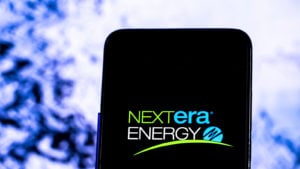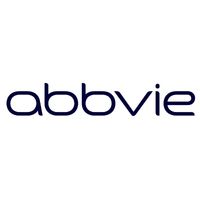DividendChannel.com has a list of 25 SAFE dividend stocks.
By the site’s definition, these stocks have a reasonably high yield; the quarterly dividend is accelerating, they’ve never missed or lowered dividends and they have paid dividends for at least 20 years.
Twenty years seems like a long time. However, Dividend.com lists 15 stocks that have paid dividends for a century or more. That’s truly astounding.
Anyway, buying dividend stocks that consistently pay them has an irresistible pull on many investors. I’ve never been one of those people. To me, it’s all about the total return. How you get it is irrelevant. Just get it.
As for safe havens, there aren’t any other than 100% guaranteed Treasury bills. Speaking of which, they’ve become far more popular now that interest rates have increased.
Finally, dividend stocks have some competition. A 5% dividend yield doesn’t look nearly as enticing as a 5% Treasury yield.
As a result, when searching for dividend safe havens these days, you have to be far more picky about the names you ultimately choose.
Here are my three picks from DividendChannel.com’s list of 25.
NextEra Energy (NEE)

NextEra Energy (NYSE:NEE) is one of three stocks InvestorPlace contributor Louis Navellier said had zero hope in 2024. My colleague felt the lowering of the distribution at the Florida utility’s subsidiary NextEra Energy Partners (NYSE:NEP) was an emphatic signal to sell NEE shares.
I don’t see it the same way.
There are two segments to NextEra: Florida Power & Light (FPL), the country’s largest utility with 5.8 million customer accounts serving more than 12 million Floridians. The other is NextEra Energy Resources, the world’s largest generator of renewable energy from wind, solar and battery storage.
In Q3 2023, the company’s adjusted earnings per share increased by 10.6% to $0.94 from $0.85 a year earlier. FPL contributed 62% of earnings, with NextEra Energy Resources bringing in 46%.
In 2021, its earnings per share were $2.55. By 2026, it expects them to be as high as $4.00, a compound annual growth rate of 9.4%. As we know, dividends follow earnings. It expects to increase dividends by 10% annually through at least 2024.
The utility has increased its dividend for 29 consecutive years. It currently pays a $1.87 annual dividend yielding 3.21%. It pays out just 48% of its earnings as dividends. Over the last 10 years, it’s grown its dividend by 10.98% annually.
Its 10-year annual return is 13.5%, almost double the utilities sector. Down 30% year-to-date, it hasn’t traded this low since 2020.
Aflac (AFL)

Aflac (NYSE:AFL) is best known for providing supplemental insurance to companies and their employees against a serious accident or illness. That insurance covers out-of-pocket expenses not covered by your medical insurance. With healthcare costs continually moving higher, protection can provide peace of mind during these stressful moments in life.
Across the board, supplemental insurance can help meet the gap in your coverage, whether for dental insurance, critical illness or many other major types of plans.
Aflac was started in 1955 by John Amos and his brothers Paul and Bill. Aflac stands for the American Family Life Insurance Company of Columbus. In its first year, it brought in 6,400 policyholders. In June 1974, it went public on the NYSE at $7.25 a share. Since then, it hasn’t looked back.
Many people know the company through the Aflac duck that was introduced in a 2000 ad campaign. It quickly became so well known that the company added the duck to its logo in 2005.
As of June 30, the company’s net debt was $2.37 billion — a total debt of $7.09 billion less $4.72 billion in cash — or just 5% of its $47 billion market capitalization.
In 2011, Aflac paid an annual dividend of $0.62. In 2023, it will pay an estimated $1.68 for a compound annual growth rate of 7.9%. As many dividend investors like to breach, it’s not the yield that matters but the yearly growth.
Aflac’s got plenty.
AbbVie (ABBV)
AbbVie (NYSE:ABBV) hasn’t paid dividends for as long as either NextEra or Aflac — it was spun off from Abbott Laboratories (NYSE:ABT) in 2012. But since its inception, it’s increased the annual payment by 270%.
The biopharmaceutical company known for its trio of immunology drugs — Humira, Skyrizi and Rinvoq — continues to grow its drug development pipeline. It’s got several oncology drugs in Phase 3 trials or soon to be in them. It’s even developing new uses for Botox, its medication to reduce wrinkles. Studies have shown that Botox patients are less anxious after their treatments.
Everything old is new again.
The company is transitioning from one led by a single drug (Humira) to one with multiple winners. In the third quarter, while Humira’s global revenues fell by 36.2%, its immunology stablemates, Skyrizi and Rinvoq, rose by 52.1% and 59.8%.
Investors have been worried in recent years that it wouldn’t be able to replace Humira’s revenues. However, in Q3 2023, the two drugs had sales of $3.24 billion, just $310 million less than Humira.
In 2023, it expects EPS of at least $11.19, while 2024 will see earnings of at least $11.00 a share. As a result, it announced a 4.7% increase in its quarterly dividend to $1.55. The firm’s annual rate of $6.20 yields a healthy 4.4%.
On the date of publication, Will Ashworth did not hold (either directly or indirectly) any positions in the securities mentioned in this article. The opinions expressed in this article are those of the writer, subject to the InvestorPlace.com Publishing Guidelines.

